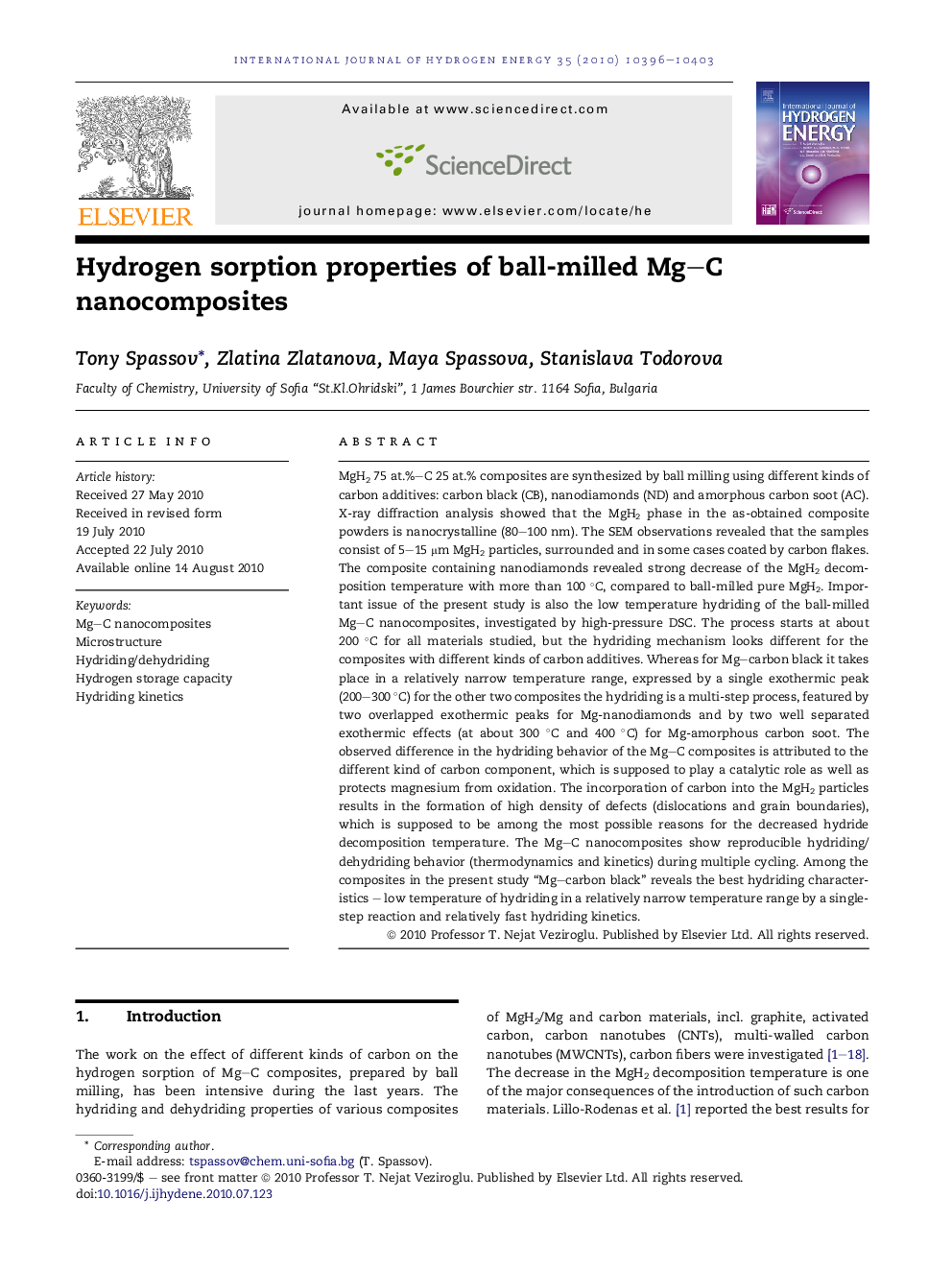| Article ID | Journal | Published Year | Pages | File Type |
|---|---|---|---|---|
| 1280098 | International Journal of Hydrogen Energy | 2010 | 8 Pages |
MgH2 75 at.%–C 25 at.% composites are synthesized by ball milling using different kinds of carbon additives: carbon black (CB), nanodiamonds (ND) and amorphous carbon soot (AC). X-ray diffraction analysis showed that the MgH2 phase in the as-obtained composite powders is nanocrystalline (80–100 nm). The SEM observations revealed that the samples consist of 5–15 μm MgH2 particles, surrounded and in some cases coated by carbon flakes. The composite containing nanodiamonds revealed strong decrease of the MgH2 decomposition temperature with more than 100 °C, compared to ball-milled pure MgH2. Important issue of the present study is also the low temperature hydriding of the ball-milled Mg–C nanocomposites, investigated by high-pressure DSC. The process starts at about 200 °C for all materials studied, but the hydriding mechanism looks different for the composites with different kinds of carbon additives. Whereas for Mg–carbon black it takes place in a relatively narrow temperature range, expressed by a single exothermic peak (200–300 °C) for the other two composites the hydriding is a multi-step process, featured by two overlapped exothermic peaks for Mg-nanodiamonds and by two well separated exothermic effects (at about 300 °C and 400 °C) for Mg-amorphous carbon soot. The observed difference in the hydriding behavior of the Mg–C composites is attributed to the different kind of carbon component, which is supposed to play a catalytic role as well as protects magnesium from oxidation. The incorporation of carbon into the MgH2 particles results in the formation of high density of defects (dislocations and grain boundaries), which is supposed to be among the most possible reasons for the decreased hydride decomposition temperature. The Mg–C nanocomposites show reproducible hydriding/dehydriding behavior (thermodynamics and kinetics) during multiple cycling. Among the composites in the present study “Mg–carbon black” reveals the best hydriding characteristics – low temperature of hydriding in a relatively narrow temperature range by a single-step reaction and relatively fast hydriding kinetics.
